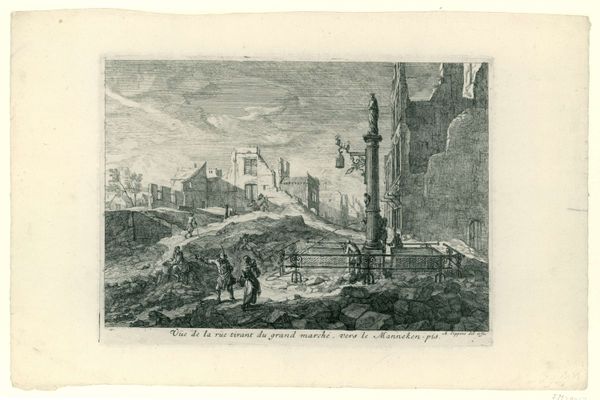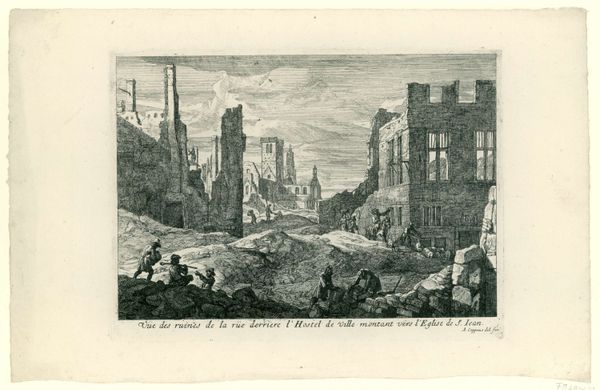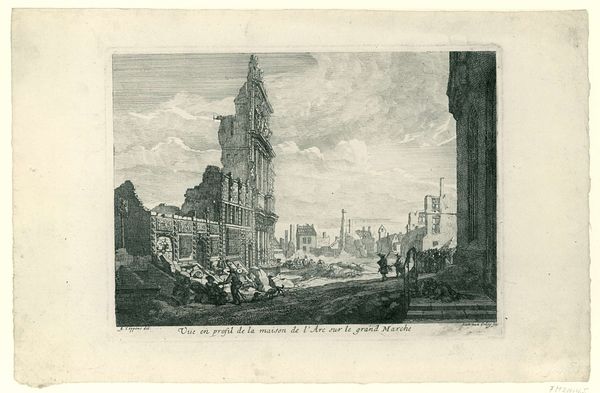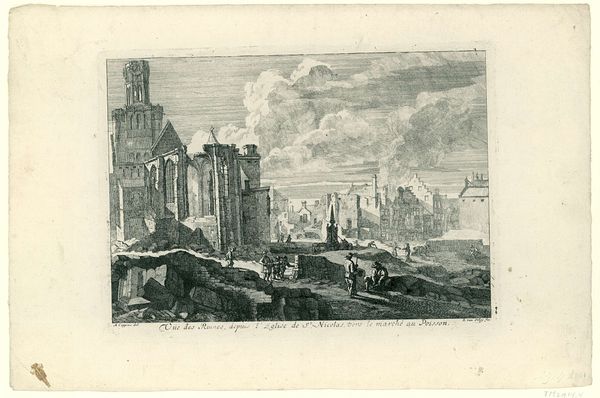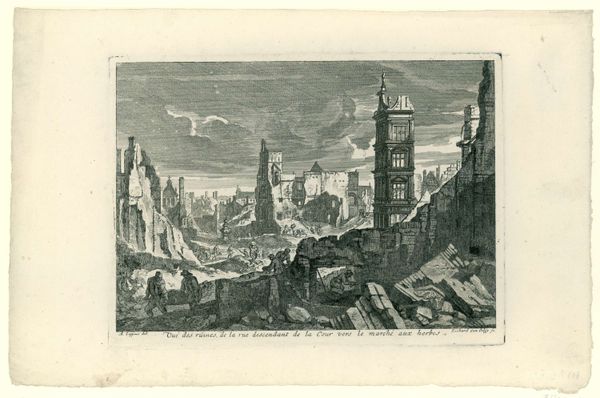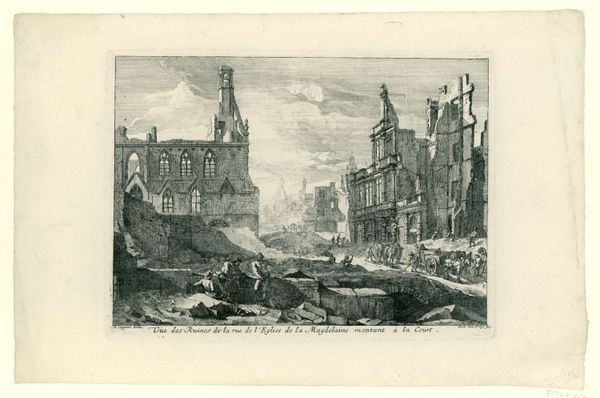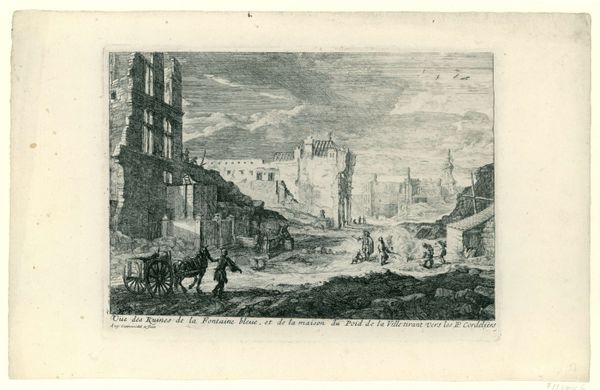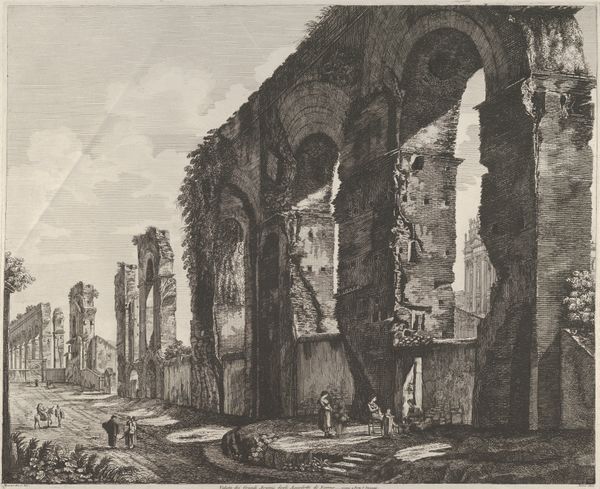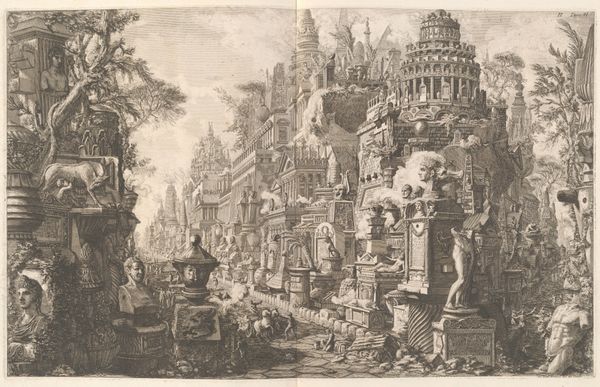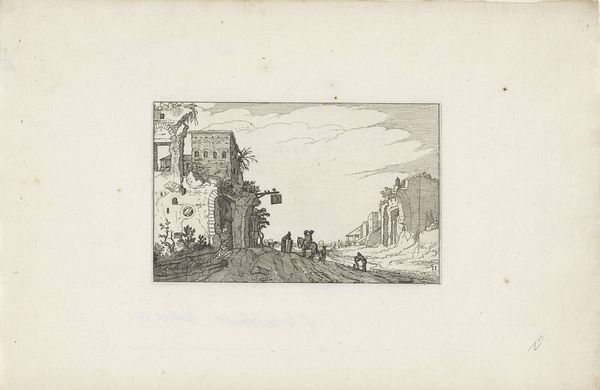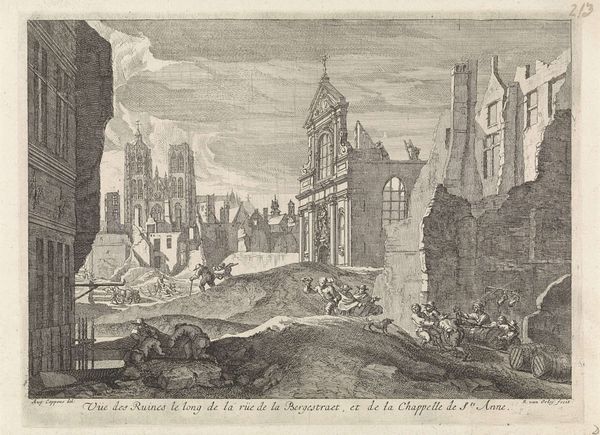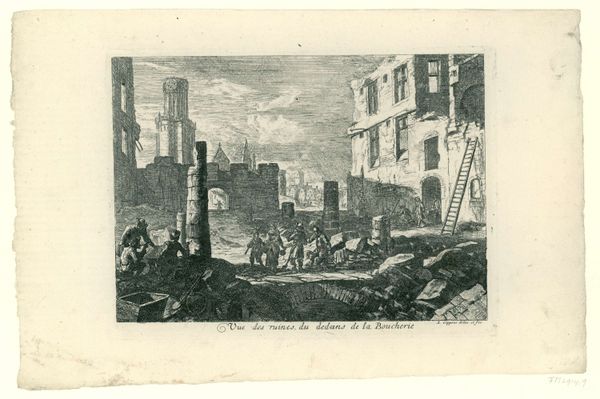
drawing, print, ink, engraving
#
drawing
#
baroque
#
ink paper printed
# print
#
old engraving style
#
landscape
#
ink
#
pen-ink sketch
#
line
#
cityscape
#
history-painting
#
engraving
Dimensions: height 260 mm, width 388 mm
Copyright: Rijks Museum: Open Domain
Editor: Augustin Coppens’ 1695 engraving, "Ruïnes in de Wagenstraat te Brussel," is striking. The devastation is so palpable; the crumbling buildings, the figures amidst the rubble. What historical context amplifies its impact? Curator: Indeed. This image serves as a potent record of the 1695 bombardment of Brussels by French troops. Consider its immediate audience. Prints like this, widely distributed, helped shape public opinion regarding Louis XIV's aggression and Brussels' suffering, very much designed for political consumption and memory-making. Who were the patrons of Coppens at this time? Editor: I imagine local leaders and wealthy merchants keen on documenting and perhaps galvanizing support for rebuilding. Was this destruction commonplace during that era? Curator: Sadly, yes. But this event had specific ramifications. This attack occurred during the Nine Years' War, revealing the vulnerability of urban centers to modern warfare and propaganda, even in so-called 'civilized' societies. What message does Coppens’ choice of a ruined cityscape as subject matter send about Baroque artistic conventions? Editor: I suppose that beauty might give way to documenting truth, revealing trauma for both locals and a much broader audience. The contrast with typical Baroque exuberance is really strong here. This challenges pre-conceived notions of the style as purely celebratory and decorative, doesn't it? Curator: Precisely. The print enters the public sphere to shape public understanding and reaction. Now, looking at Coppens’ artistic choices, how do you see that reflected here in the composition, medium, or dissemination? Editor: Seeing it as a politically charged image helps to explain its raw emotion. I'm struck by how immediate and real the devastation must have felt to viewers then. Thanks, that opened my eyes! Curator: And reflecting on the public and political role of art allows me to revisit ingrained assumptions too.
Comments
No comments
Be the first to comment and join the conversation on the ultimate creative platform.
